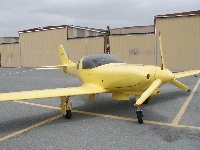 |
N322Z
sitting at the hangar ready to go
N322Z was originally fitted with a two-bladed prop. Here you see the
three-bladed currently on the aircraft. Both props were designed and
manufactured by Craig Catto specifically for N322Z.
|
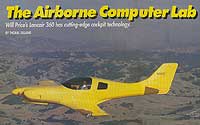 |
N322Z
featured in KitPlanes magazine
N322Z was the subject of a feature article in the December, 1994 issue
of KitPlanes. This photo was used for a two page spread in the magazine.
|
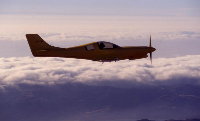 |
N322Z
at dusk
Low clouds and fog of the San Francisco area provide a backdrop for
a silhouette of N322Z |
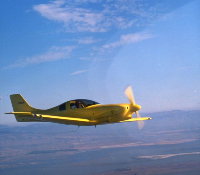 |
N322Z
on a clear day
It's not always foggy in the San Francisco Bay Area-blue and yellow make
a nice combination. If you look closely, you will see that the pilot is
in the right seat. Not so. This was scanned from a color slide which was
mounted back side up in the scanner thereby reversing the image.
|
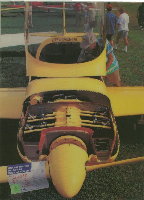 |
N322Z
at Oshkosh
This photo was taken by FLYING magazine at Oshkosh and was published in
their November, 1993 issue. They were kind enough to send Will (the builder)
a large glossy print. N322Z has visited Oshkosh three times.
|
| 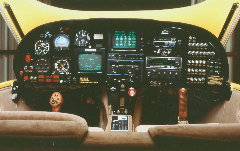
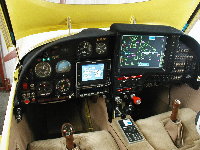
|
Glass
Panel
The original panel included two 5-inch CRTs (monochrome green). All
engine monitoring and outside monitoring is done by the computers and
can be displayed on either or both screens. The normal mode is to display
this monitoring information on one screen and the moving map on the
other. The current version of the panel contains one 5 inch color LCD
and one 10.4 inch color LCD (the Arnav ICDS 2000). As before they provide
100% redundancy for both engine/outside monitoring and moving map. In
addition, the ICDS has a ton of options.
|
 |
ICDS 2000 display
Display
options of the Arnav "big-screen" ICDS 2000 allow you to show
your moving map with sectional detail. This photo is a screen shot of
a trip from Oakland to Reno. Notice both cities and airports are clearly
identified. For more about this, visit the Arnav Web site. |
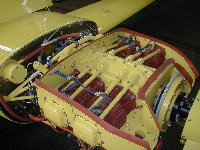 |
Engine
The engine is a Lycoming O-360 with an Ellison
throttle body; it has been flowed and ported by Lycon
(Visalia, California) and fitted with 9.5/1 pistons. This amazingly smooth
engine produced 226 horsepower on the dyno. If you look closely you see
a wire coming from the oil filler cap. The oil dip stick is actually a
capacitor gauge with a thermocouple on the end. The display unit in the
cockpit shows the oil level (in quarts) and the oil temperature. The oil
level reading is highly accurate. In flight it reads one and one half
quarts lower than when the engine is not running. That reflects the amount
of oil being circulated within the engine. Both the engine and the baffling
are powder coated yellow-the same color as the airplane.
|
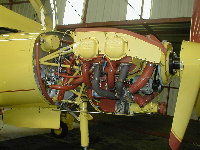 |
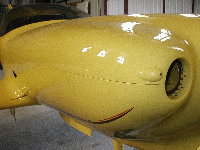
|
Cowling
The cowling is attached to the fuselage and the two halves held together
with hinge pins-no unsightly row of screws.
|
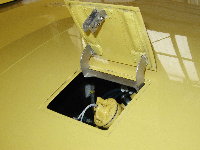 |
Oil
filler door
The oil filler access door hinge is designed to give a smooth, hardware-free
surface when closed. It is spring loaded and opens with a release handle
just inside the right air intake.
|
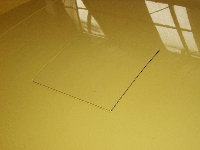 |
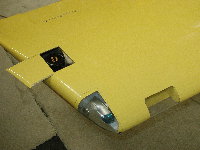 |
Fuel
filler
No unsightly fuel filler caps on this wing. The extended-range tank and
standard tank (20 gallons on each side) are interconnected and fill from
this covered wing-tip filler. When closed, the sliding door is barely
noticeable. Also visible in these photos are the position lights and the
right landing light.
|
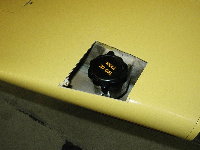 |
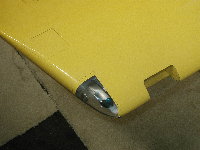 |
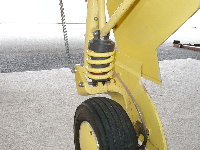 |
Main
strut
The rubber donuts spring/shocks included with the kit provide next to
zero in the spring category (about the only spring action you get is from
the tires). The unit shown is from Spy Aircraft Systems (in New Zealand);
it consists of a coil spring and a damper (shock absorber). It makes a
HUGE difference in landing-much easier to nail it.
|
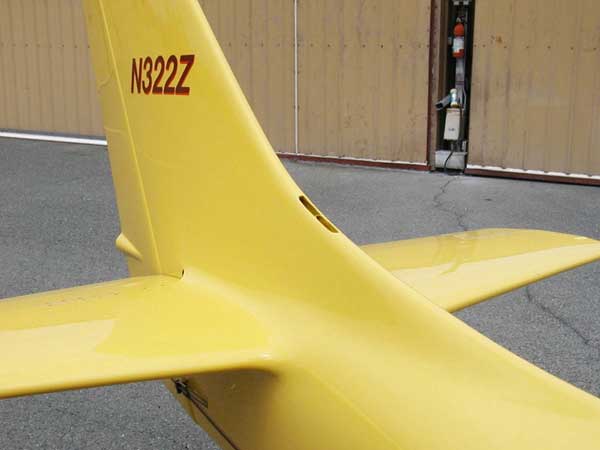 |
Air
vent
There's nothing quite as nice as cool air on the back of your head on
a hot day. For this, cooling air is taken in by this opening in the vertical
stabilizer and ducted forward. It is discharged through two eyeball vents
behind the aircraft's occupants. You can see them in the close-up of the
ski rack |
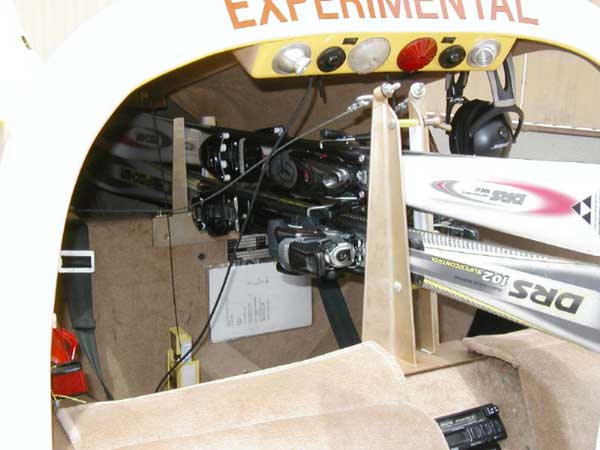 |
Ski
rack
The builder was an avid skier, so a ski rack was a must. With this set
up, two pair of skis are anchored solidly between the pilot and passenger.
With the rear of the binding snug against the forward rack, the ski cg
is only about 12 inches behind the edge of the seat so they create no
weight/balance problem.
|
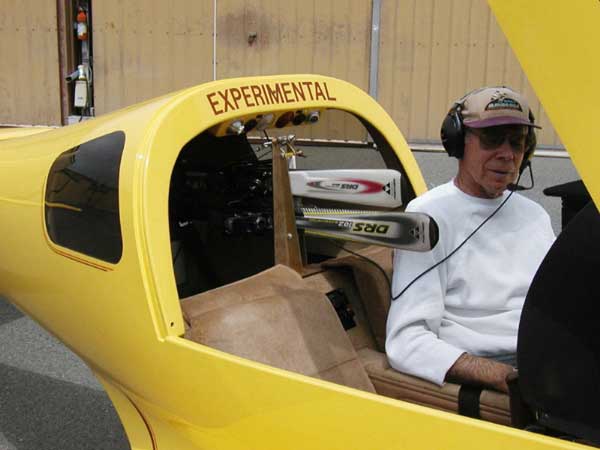 |

